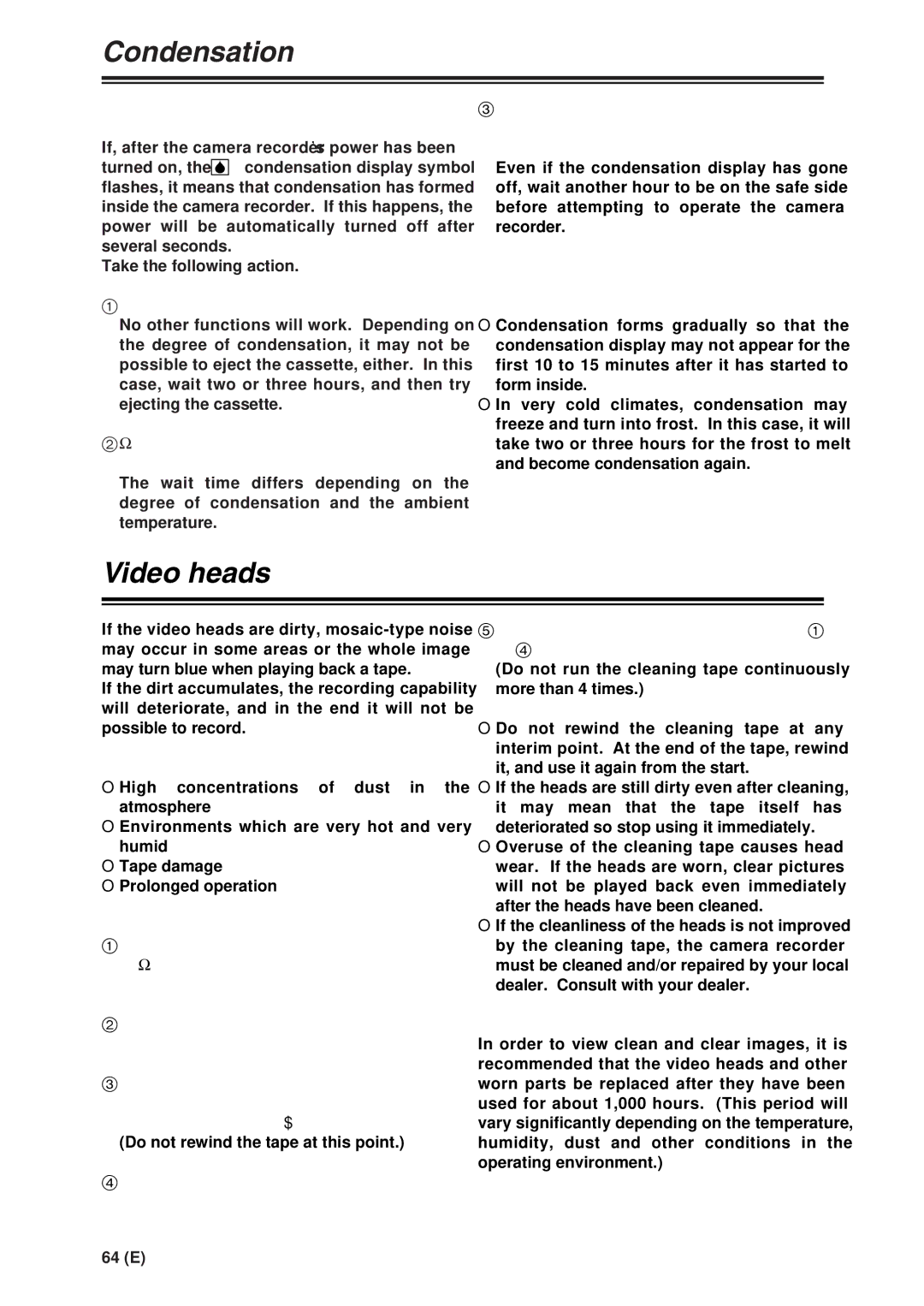
Condensation
How to tell when condensation has formed inside and what to do about it
If, after the camera recorder’s power has been
turned on, the ![]()
![]()
![]() condensation display symbol flashes, it means that condensation has formed inside the camera recorder. If this happens, the power will be automatically turned off after several seconds.
condensation display symbol flashes, it means that condensation has formed inside the camera recorder. If this happens, the power will be automatically turned off after several seconds.
Take the following action.
1Remove the cassette.
No other functions will work. Depending on the degree of condensation, it may not be possible to eject the cassette, either. In this case, wait two or three hours, and then try ejecting the cassette.
2Wait two or three hours with the cassette holder open.
The wait time differs depending on the degree of condensation and the ambient temperature.
3After two or three hours have elapsed, turn on the power, and check whether the condensation display has gone off.
Even if the condensation display has gone off, wait another hour to be on the safe side before attempting to operate the camera recorder.
Bear in mind that condensation may be forming before the condensation display comes on.
OCondensation forms gradually so that the condensation display may not appear for the first 10 to 15 minutes after it has started to form inside.
OIn very cold climates, condensation may freeze and turn into frost. In this case, it will take two or three hours for the frost to melt and become condensation again.
Video heads
If the video heads are dirty,
If the dirt accumulates, the recording capability will deteriorate, and in the end it will not be possible to record.
Causes of dirty heads
OHigh concentrations of dust in the atmosphere
OEnvironments which are very hot and very humid
OTape damage
OProlonged operation
Using the cleaning cassette tape
1Insert the cleaning tape in the camera recorder, and set the POWER switch to ON.
2Press the CAMERA/VCR button, and check that the VCR lamp has lit.
3Tilt the OPERATION lever in the 1 direction, and allow 10 seconds to pass before tilting it in the $ direction.
(Do not rewind the tape at this point.)
4Remove the cleaning tape, proceed with a test recording and playback using another tape, and check the images.
5If the images are not clear, repeat steps 1 to 4.
(Do not run the cleaning tape continuously more than 4 times.)
ODo not rewind the cleaning tape at any interim point. At the end of the tape, rewind it, and use it again from the start.
OIf the heads are still dirty even after cleaning, it may mean that the tape itself has deteriorated so stop using it immediately.
OOveruse of the cleaning tape causes head wear. If the heads are worn, clear pictures will not be played back even immediately after the heads have been cleaned.
OIf the cleanliness of the heads is not improved by the cleaning tape, the camera recorder must be cleaned and/or repaired by your local dealer. Consult with your dealer.
Regular inspections
In order to view clean and clear images, it is recommended that the video heads and other worn parts be replaced after they have been used for about 1,000 hours. (This period will vary significantly depending on the temperature, humidity, dust and other conditions in the operating environment.)
64 (E)
